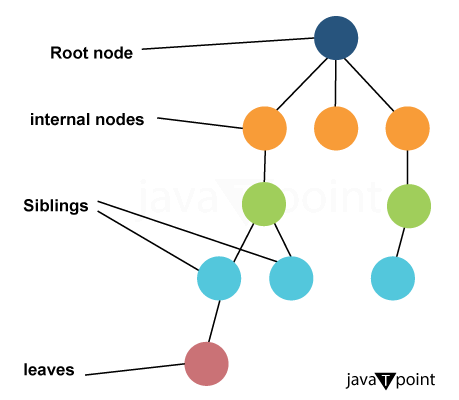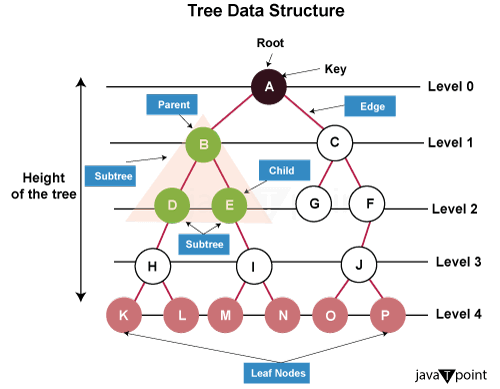Scapegoat TreesScapegoat Trees are a unique and effective structure for managing dynamic sets in the broad field of data structures and computer science. They are binary search tree (BST) types that may self-balance when needed in addition to supporting insertion, deletion, and search operations. Even in skewed data distributions, Scapegoat Trees' exceptional capacity to preserve balance enables them to provide quick search speeds. This article thoroughly explains Scapegoat Trees, illuminating their characteristics and inner workings while concentrating on insertion-a crucial data management activity. A self-balancing structure's adaptability and a binary search tree's simplicity are combined in the 1983 invention of Galperin and Rivest, who named it the "Scapegoat Tree." In situations where dynamic sets must be maintained with logarithmic search times, it's a priceless addition to the toolbox of data structures that computer scientists can employ. 
Understanding Scapegoat TreesBinary search trees with an extra balancing feature are called scapegoat trees. They are made to ensure effective search operations by maintaining a logarithmic height. To understand Scapegoat Trees, let's begin with some of their salient characteristics:
Now that we understand the basic characteristics of scapegoat trees, let's examine the insertion operation in more detail as it plays a crucial role in their functionality. Insertion in Scapegoat TreeA basic operation in any data structure that keeps dynamic sets together is insertion. Insertion in Scapegoat Trees is more than just adding a node; it also involves maintaining an eye on the tree's balance and making any required modifications. The insertion procedure in a Scapegoat Tree operates as follows: 1. Searching for the insertion point Finding the ideal spot to insert a new node is the first step in the insertion procedure. We traverse the tree by comparing the value to be inserted with the values of the nodes along the path, beginning at the root. We go to the left subtree if the value is less than the value of the current node, and to the right subtree if it is greater. This keeps on until we come to a leaf node. 2. Inserting New Node We insert the new node as a child of the appropriate leaf node after we have located it. The value to be inserted becomes the left child if it is less than the value of the leaf node, and the right child if it is more. The binary search tree attribute is preserved by this straightforward insertion process. 3. Rebuilding When Necessary When we keep an eye on the tree's height, the special quality of scapegoat trees is put into action. We measure the tree's height after adding a new node and compare it to the alpha parameter. We consider a subtree to be unbalanced if its height is greater than α times the total height of the tree. We carry out a rebuilding process in such a case, which involves utilizing the elements in the unbalanced subtree to create a new balanced tree. Rebuilding is essential to preserving the scapegoat tree's ability to balance its height. 4. Finding Scapegoat One of the most important decisions made throughout the insertion process is which subtree to rebuild. To determine which subtree needs rebuilding, we search for the "scapegoat." The ancestor of the inserted node, up to which the height-balancing condition was broken, is the scapegoat. To reduce the rebuilding cost, we want to rebuild the smallest subtree possible, therefore this step is crucial. We're going to rebuild the tree rooted at the scapegoat so that it stays balanced. 5. Rebuilding the Scapegoat Tree After determining who the scapegoat is, we rebuild the subtree to establish a new, balanced subtree with the scapegoat as its root. Standard methods such as gathering the items from the subtree through an in-order traverse can be used to implement the rebuilding. From there, a balanced binary search tree can be built. 6. Updating the Tree We rebuild the scapegoat subtree and then make the necessary updates to the tree structure. The freshly built balanced subtree takes the place of the subtree rooted at the scapegoat, guaranteeing that the tree keeps its height-balancing characteristic. 
Look over Rebuilding of Scapegoat TreeTo fully understand the Scapegoat Tree insertion procedure, it is imperative to comprehend the significance of rebuilding. Let's examine the rebuilding stage in more detail:
We begin at the recently inserted node and work our way up toward the root to select the scapegoat. We compare the heights of the current node's left and right subtrees at each step. The current node is designated as the scapegoat if the height of any subtree exceeds α times the total height of the tree.
We must reconstruct the subtree rooted at the scapegoat when the scapegoat has been located. Usually, this rebuilding process includes the following steps:
Advantages and Disadvantages of Scapegoat TreesScapegoat Trees have their own set of benefits and drawbacks, just like any other data structure. When selecting a data structure for your particular use case, being aware of these might help you make well-informed choices. Advantages:
Disadvantages:
Use cases of Scapegoat Trees:Scapegoat Trees' dynamic structure and quick search times make them ideal for a wide range of use cases. In the following situations, Scapegoat Trees can prove to be a wise decision:
ConclusionScapegoat Trees, with their self-balancing property and logarithmic height, are a powerful addition to data structures, ideal for scenarios requiring fast search times. Scapegoat tree insertion entails searching, inserting, identifying scapegoats, updating, and rebuilding while preserving equilibrium. It is essential to understand their mechanics, benefits, and drawbacks to make wise judgments. In conclusion, Scapegoat Trees improves the toolkit of programmers and computer scientists by providing an elegant solution to balanced binary search trees.
Next TopicStack Organisation
|
 For Videos Join Our Youtube Channel: Join Now
For Videos Join Our Youtube Channel: Join Now
Feedback
- Send your Feedback to [email protected]
Help Others, Please Share










